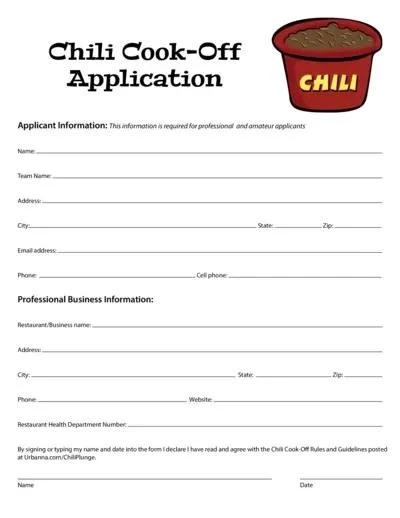trapezius stretches pdf
Trapezius Stretches⁚ A Comprehensive Guide
This guide offers a comprehensive overview of trapezius stretches‚ addressing various techniques and their benefits. Explore effective stretches targeting both upper and lower trapezius muscles‚ improving posture and relieving pain. Learn how to incorporate these stretches into your daily routine for lasting relief and improved well-being. Discover additional resources and strengthening exercises for optimal results.
Understanding the Trapezius Muscle
The trapezius muscle‚ often called the “traps‚” is a large‚ superficial muscle covering the upper back and neck. It’s divided into three sections⁚ upper‚ middle‚ and lower. The upper trapezius originates from the base of the skull and the upper cervical vertebrae‚ inserting into the outer third of the clavicle and the acromion process of the scapula. Its primary function involves elevating the scapula (shoulder blade)‚ extending the head‚ and rotating the head. The middle trapezius originates from the spinous processes of the upper thoracic vertebrae and inserts into the spine of the scapula. Its main function is retracting the scapula‚ drawing the shoulder blades together. Finally‚ the lower trapezius originates from the spinous processes of the lower thoracic vertebrae and inserts into the root of the spine of the scapula. This section depresses the scapula and assists in upward rotation.
Understanding the distinct functions of each trapezius section is crucial for targeting specific areas during stretching. Tightness or weakness in any section can lead to pain‚ poor posture‚ and restricted movement. Therefore‚ a comprehensive stretching routine should address all three sections of the trapezius muscle for optimal results and overall well-being.
Common Causes of Trapezius Tightness
Trapezius tightness is a prevalent issue stemming from various factors‚ often intertwined. Prolonged periods of sitting‚ especially with poor posture‚ are significant contributors. This leads to sustained muscle shortening and reduced blood flow‚ causing stiffness and pain. Similarly‚ repetitive movements‚ such as those involved in prolonged computer use or manual labor‚ can overload the trapezius muscles‚ resulting in chronic tension. Stress and anxiety play a substantial role‚ as they often manifest as muscle tension in the neck and shoulders. Emotional stress triggers the body’s “fight-or-flight” response‚ leading to increased muscle tension‚ including in the trapezius.
Furthermore‚ underlying musculoskeletal imbalances can affect the trapezius. Weakness in other muscles‚ such as the rhomboids or rotator cuff muscles‚ can force the trapezius to compensate‚ leading to overload and tightness. Lastly‚ injuries to the neck or shoulder can result in compensatory muscle tension in the trapezius‚ as the body attempts to stabilize the affected area. Addressing these underlying causes is often crucial for effectively managing trapezius tightness. A holistic approach encompassing lifestyle modifications‚ postural correction‚ and targeted exercises is often the most effective strategy.
Effective Trapezius Stretches⁚ Upper Trapezius
Targeting the upper trapezius requires specific stretches to alleviate tension and improve mobility. One effective method involves a seated side neck stretch. Sit tall‚ gently tilt your head to one side‚ bringing your ear towards your shoulder. You can deepen the stretch by gently placing your hand on the opposite side of your head‚ applying gentle pressure. Hold this position for 20-30 seconds‚ breathing deeply throughout. Repeat on the other side. Another beneficial stretch is the cross-body neck stretch. Gently pull one side of your head towards your opposite shoulder using your hand‚ feeling the stretch along the upper trapezius on the side being stretched. Hold for 20-30 seconds‚ ensuring slow‚ controlled movements. Remember to maintain proper posture throughout these stretches to maximize effectiveness and avoid strain.
For a more intense stretch‚ consider the self-massage technique. Use your fingers or a massage ball to gently apply pressure to the upper trapezius muscle‚ located at the base of your neck and upper shoulders. Move your fingers or the ball in small circles‚ applying pressure to the tender points. You can also use a towel for added leverage‚ wrapping it around your neck and gently pulling it to deepen the stretch. These stretches should be performed gently‚ focusing on releasing tension rather than forcing the stretch. Remember to listen to your body and stop if you feel any sharp pain.
Effective Trapezius Stretches⁚ Lower Trapezius
The lower trapezius‚ often neglected‚ plays a crucial role in shoulder blade stability and posture. Targeting this area requires stretches that emphasize shoulder blade movement and retraction. One highly effective stretch is the “thread the needle” pose‚ commonly found in yoga. Start on your hands and knees‚ then extend one arm underneath your body‚ gently twisting your torso towards the opposite side. Hold this position for 20-30 seconds‚ feeling the stretch in your lower back and shoulder blade. Repeat on the other side. Another beneficial stretch involves a prone shoulder blade squeeze. Lie face down‚ arms extended to the sides. Gently squeeze your shoulder blades together‚ holding for a few seconds. Repeat this several times‚ focusing on the controlled movement and engagement of the lower trapezius muscles. These exercises enhance posture by strengthening the muscles responsible for pulling the shoulder blades back and down.
Another excellent exercise is the standing row using resistance bands. Stand on the band with your feet shoulder-width apart‚ holding the handles. Keeping your back straight‚ pull the band towards your abdomen‚ squeezing your shoulder blades together. Slowly return to the starting position‚ maintaining control. Repeat this 10-15 times. Remember‚ proper form is crucial for preventing injury and maximizing the effectiveness of these lower trapezius stretches. Consistency is key to improving posture and relieving tension in this often-overlooked muscle group. Gentle‚ controlled movements will yield better results than forceful attempts.
Additional Stretching Techniques
Beyond targeted trapezius stretches‚ incorporating complementary techniques enhances flexibility and overall well-being. Foam rolling‚ a self-massage method‚ effectively addresses muscle tightness and trigger points. Roll slowly over the upper back and neck‚ focusing on areas of discomfort. Hold on any particularly tense spots for 30 seconds before moving on. This helps release knots and improve blood flow‚ promoting relaxation. Another beneficial method is using a massage ball. Lie face down and place the ball under your upper back‚ rolling it gently across the muscles. Apply pressure to trigger points for approximately 30 seconds each. This targeted approach can alleviate persistent pain and stiffness.
Furthermore‚ consider incorporating gentle neck rotations and tilts. While seated or standing‚ slowly rotate your head in a circular motion‚ both clockwise and counterclockwise. Follow this with gentle side-to-side tilting‚ bringing your ear towards your shoulder. Hold each tilt briefly‚ ensuring you are not forcing the stretch. These exercises improve neck mobility and flexibility‚ reducing stiffness and tension. Remember‚ these additional techniques complement targeted trapezius stretches‚ creating a holistic approach to muscle care. Consistency and mindful execution are key to achieving optimal results. Always listen to your body and stop if you experience any sharp pain.
Incorporating Stretches into Daily Routine
Integrating trapezius stretches into your daily routine requires mindful planning and consistency. Start by setting aside a dedicated time each day‚ even if it’s just 5-10 minutes. Consistency is crucial for achieving noticeable improvements in flexibility and pain reduction. Choose a time that works best for your schedule – perhaps during your lunch break‚ before bed‚ or first thing in the morning. This consistency will help build the habit and make it a natural part of your day.
Consider incorporating stretches throughout the day‚ especially after prolonged periods of sitting or working at a desk. Simple neck rolls and shoulder shrugs can provide quick relief from accumulated tension. If you work at a computer‚ set reminders to take short stretch breaks every hour. This prevents stiffness from building up. Remember to listen to your body and adjust the intensity and duration of stretches based on your individual needs and comfort level. Don’t push yourself too hard‚ especially when starting out. Gentle‚ consistent stretching is more effective than sporadic intense sessions. Over time‚ you’ll notice an increase in your range of motion and a reduction in muscle tightness. Prioritize proper form over quantity of repetitions. The goal is to relieve tension‚ not to cause further strain.
Preventing Trapezius Pain
Preventing trapezius pain involves a multifaceted approach encompassing posture correction‚ ergonomic adjustments‚ and mindful movement. Maintaining good posture is paramount; avoid slouching or hunching over‚ ensuring your shoulders are relaxed and your head is aligned over your spine. This prevents undue strain on the trapezius muscles. Regularly assess your workspace ergonomics; ensure your chair provides adequate support‚ your monitor is at eye level‚ and your keyboard and mouse are positioned to minimize strain. Take frequent breaks from prolonged sitting‚ incorporating short walks or simple stretches to alleviate muscle tension.
Engage in regular physical activity that promotes balanced muscle development. Strengthening exercises for the core‚ back‚ and shoulders help support proper posture and reduce the strain on the trapezius muscles. Consider incorporating yoga or Pilates into your routine‚ as these practices focus on mindful movement and postural alignment. Pay close attention to your body’s signals; address any muscle tension or discomfort promptly through stretching or massage. Hydration and proper sleep are also crucial for muscle health and recovery; dehydration and sleep deprivation can exacerbate muscle tension and increase susceptibility to pain.
Strengthening Exercises for Improved Posture
Strengthening exercises play a vital role in improving posture and alleviating trapezius pain by building supporting musculature. Focus on exercises that target the muscles responsible for scapular retraction and stabilization‚ including the rhomboids‚ lower trapezius‚ and rotator cuff muscles. These muscles work synergistically to maintain proper shoulder blade position and alleviate strain on the upper trapezius. Begin with simple exercises such as shoulder blade squeezes‚ where you pinch your shoulder blades together‚ holding for a few seconds and repeating several times. Progress to more challenging exercises like rows‚ using resistance bands or weights to increase the intensity and build strength.
Incorporate exercises that strengthen the deep neck flexor muscles‚ which are crucial for head and neck alignment. These muscles counteract the pull of the upper trapezius‚ promoting a balanced posture. Chin tucks are a great starting point; gently pull your chin back towards your neck‚ holding for a few seconds before releasing. As you gain strength‚ you can progress to more challenging exercises‚ such as isometric neck holds‚ where you resist the force of your hands pushing your head forward. Remember to maintain proper form throughout each exercise‚ ensuring you engage the correct muscle groups. Consistency is key; aim for regular exercise sessions to see significant improvements in posture and trapezius muscle health.
Resources for Further Information
For those seeking more in-depth information on trapezius stretches and related topics‚ several valuable resources are readily available. Numerous websites dedicated to fitness‚ physical therapy‚ and health offer detailed guides‚ videos‚ and interactive exercises. These platforms often feature expert advice‚ visual demonstrations‚ and personalized programs to cater to individual needs and fitness levels. Many reputable sources provide downloadable PDFs containing comprehensive instructions and illustrations of various stretches‚ ensuring clarity and ease of understanding. Additionally‚ professional medical journals and publications contain peer-reviewed research articles that delve into the anatomical and physiological aspects of the trapezius muscle‚ its function‚ and effective treatment strategies.
Consulting with healthcare professionals‚ such as physical therapists or physicians‚ can provide personalized guidance and recommendations. They can assess individual needs‚ identify underlying issues‚ and develop tailored treatment plans. These professionals can also help in addressing any specific concerns or limitations‚ ensuring safe and effective exercise practices. Remember‚ while online resources are abundant‚ professional advice remains invaluable in achieving optimal results and mitigating the risk of injury. A combination of self-guided learning from reputable online sources‚ coupled with professional guidance‚ offers a holistic approach to effectively managing trapezius muscle health.
You May Also Like

birds of colorado field guide
July 21, 2025
chili cook off judging sheet pdf
October 6, 2024
